- Bernard Preston homepage
- Reds
- Capsaicin Health Benefits
Capsaicin health benefits
Capsaicin health benefits include pain killing and anti-inflammatory effects.
It is the heat in red-hot chilli peppers like jalapenos where the benefits are to be found. Not many of us will be eating habañeros and the spiciest of them all, the Trinidad Moruga Scorpion.
Interestingly habañeros appear more orange than red; that makes them one of the very richest sources of zeaxanthin, the phytonutrient that gives protection against age-onset macular degeneration. The lutein in every dark green leafy vegetable plays a role too.
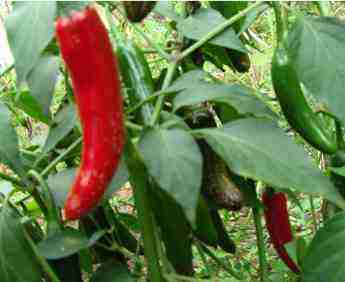
This page was last updated by Bernard Preston on 5th March, 2024.
Capsaicin is the chief pungent component in chillis; it is found in the main in the placenta, the seeds and the tip of the fruit. Do not discard any of them; that is where many of the benefits are located.
Capsaicin creams and ointments for rubbing on the skin are useful in many painful conditions including for example arthritis in the fingers; and the lesions of shingles that have healed but continue to burn.
Most important though is their effect on neoplastic cells; it is well-researched and reported in journals such as that of the National Institute of Malignant Disease.
Apoptosis
Normal cells form and then undergo what is known as apoptosis; eventually dying.
However the cells in malignant tumours instead continue to proliferate and generally take over. They have developed a way of avoiding apoptosis by deregulating the genes that control this programmed death of normal tissue.
It is complicated biochemistry but in short, capsaicin has been shown to induce the apoptosis that should normally occur in all cells; but neoplasms have learned how to circumnavigate this process. Chilis help suppress malignant growth.
Scientists
report that the oxidative-stress that is stimulated by capsaicin
contributes to this death of tumour cells by apoptosis; the
normal process that they have managed to evade.
The American Association for Malignant Disease Research reports in this vein, that capsaicin causes abnormal human prostate tissue to undergo cell death; as we have said, known as apoptosis.
This anti-proliferative effect dramatically slows the growth of those neoplastic prostate cells.
Prostate metastatic disease is the most common non-skin malignancy; there are a quarter of a million new cases every year in the USA with 29,000 deaths. After relapse no successful treatment exists.
Capsaicin blocks the NF-kB pathway
Studies from the Cedars Sinai Medical Centre report that capsaicin inhibits the growth of malignant prostate cells by blocking the NF-kB pathway that is active in many types of neoplastic disease.
In short it would appear that daily ingestion of small amounts of capsaicin from the chili family would have many benefits in both the prevention and treatment of pain syndromes; and helping overcome metastatic disease.
Capsaicin benefits
So capsaicin benefits include causing malignant tissue in the prostate to undergo apoptosis; the normal death of cells to maintain a balance between new ones that are growing to replace the old that are dying.
Neuralgia; nerve pain
The neuralgic pain of diabetes and shingles is highly problematic. The AMA council on drugs reports that capsaicin creams at a concentration of 25 to 70 parts per 100,000 brings 75% relief of these conditions; but interestingly only after four weeks, so be patient.
Capsaicin depletes Substance P that transmits painful impulses from the sensory terminals in the skin and joints to the central nervous system[2].
Likewise it's useful in the treatment of a particularly nasty syndrome that every DC sees very occasionally called reflex sympathetic dystrophy. It is also known as causalgia. An injury to a distant part, say the head causes severe disabling pain in the fingers, for example.
Capsaicin may slow PSA doubling time
Scientists report the human trial of a patient with a malignant prostate neoplasm with relapse after radiotherapy. He stabilised and remained free of signs or symptoms of recurrence after eating chilis daily with his food; 2.5 to 15 mL of habañero sauce per day.
That's quite a lot but a small amount daily as prevention is certainly in order. This had previously been described in vitro[1].
One of the problems is that chillis are only available from the garden for about six months; how to preserve jalapeno peppers is a useful analog. It is actually very simple and not time-consuming, making them obtainable all year round for your cooking.
Hummus
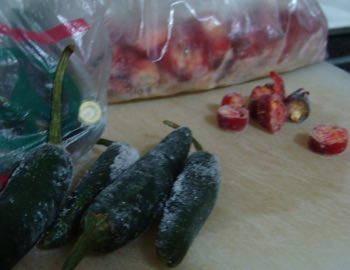
On a daily basis one can enjoy hummus using frozen jalapenos or peppadews with a green salad; it gives the meal a bit of spice and helps the medicine go down. Eating foods like lettuce, kale and spinach regularly is vital for those who want to avoid getting macular-degeneration; coupled with capsaicin health benefits would supply double protection.
This homemade hummus recipe can be thrown together in less than ten minutes; five if you do it regularly.
On a personal note the urologist was astonished to find my own PSA was 0.9; extremely low at sixty-eight, but that's an anecdote and of no scientific value. I give the capsaicin the credit.
We also use a slither of capsaicin health benefits in our free-range Eggs Florentine every morning for breakfast, combining all the value in greens, chilis and onions; on toast made from 100% wholemeal flour. Added butter helps the absorption of the carotenes.
Eggs and spinach too are good for the eyes. Read more about it at zeaxanthin macular degeneration. Find this page using Site Search in the main menu above.
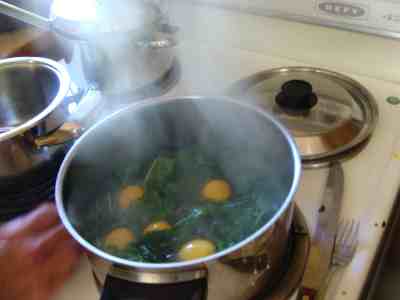
How to grow chilli
How to grow chili is a subject for every gardener because of the capsaicin health benefits.
They have a long growing-season so if you have cool spring weather, start them early in a warm spot or greenhouse.
Luckily the chili family will produce again in the second-year if you live in a mild climate; otherwise you have to start new seedlings every spring.
Bright red peppers look splendid in any flower garden; the colourful fruit is very attractive. How to grow chilli is certainly for you if you are suffering from pain and inflammation in your body.
If you find them too hot then growing peppadews is a good alternative.
How to preserve jalapeno peppers
Even though they bear for a long season, you want to make sure that you have chillis available year-round; if you are going to the trouble to concern yourself with how to grow them, then you may as well also learn to preserve jalapenos and peppadews.
It is a good deal easier than growing the chillis; in fact it's a cinch. Just chop them up and freeze them; get the details at how to preserve jalapeno peppers.
Beans
Dried beans and in fact most legumes are rather dull yet so important for us to eat regularly. So we add these capsaicin health benefits to those of our favas, for example; spice them up a bit. Unseen in this dish there are pappadews lurking.
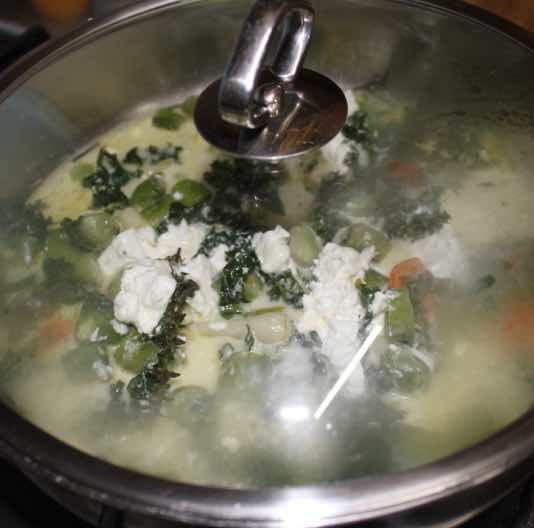
Actually green beans are much sweeter and they have less antinutrients; so grow several different varieties of legumes for year-round enjoyment and wellness.
Plant peas and pole beans in spring, limas for late summer and favas in the autumn.
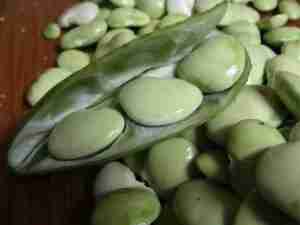 Shelled green lima beans.
Shelled green lima beans.When browsing use right click and "Open Link in New Tab" or you may get a bad gateway signal.
Newsletter
Our newsletter is entitled "create a cyan zone" at your home, preserving both yourself and Mother Earth for future generations; and the family too, of course. We promise not to spam you with daily emails promoting various products. You may get an occasional nudge to buy one of my books.
Here are the back issues.
- Lifestyle and ideal body weight
- What are ultra-processed foods?
- Investing in long-term health
- Diseases from plastic exposure
- Intensive lifestyle management for obesity has limited value
- A world largely devoid of Parkinson's Disease
- The impact of friendly bacteria in the tum on the prevention of cancer
- There's a hole in the bucket
- Everyone is talking about weight loss drugs
- Pull the sweet tooth
- If you suffer from heartburn plant a susu
- Refined maize meal and stunting
- Should agriculture and industry get priority for water and electricity?
- Nature is calling
- Mill your own flour
- Bake your own sourdough bread
- Microplastics from our water
- Alternative types of water storage
- Wear your clothes out
- Comfort foods
- Create a bee-friendly environment
- Go to bed slightly hungry
- Keep bees
- Blue zone folk are religious
- Reduce plastic waste
- Family is important
- What can go in compost?
- Grow broad beans for longevity
- Harvest and store sunshine
- Blue zone exercise
- Harvest and store your rainwater
- Create a cyan zone at your home
Did you find this page interesting? How about forwarding it to a friendly book or food junkie? Better still, a social media tick would help.
- Bernard Preston homepage
- Reds
- Capsaicin Health Benefits
Address:
56 Groenekloof Rd,
Hilton, KZN
South Africa
Website:
https://www.bernard-preston.com